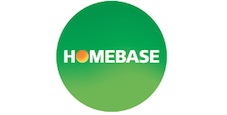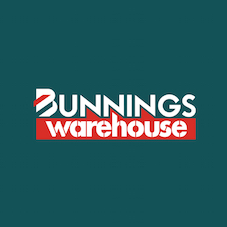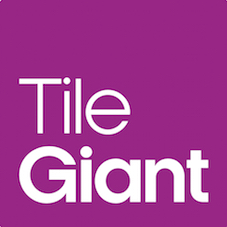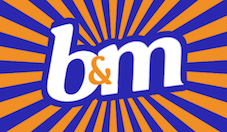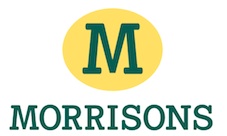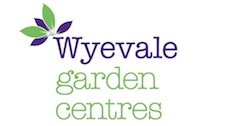UK DIY News
Barclays: Consumer Card Spending Slows In May
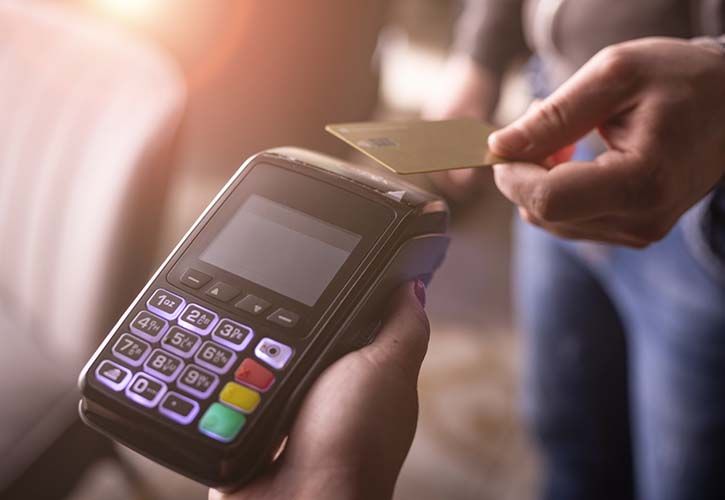
- Confidence in both household finances and ability to spend on non-essential items declined in May
- Four in 10 think that the recent EU trade deal will benefit the economy, but half will still prioritise British products, even if cheaper EU alternatives become available
- The UK’s sunniest spring on record boosted pharmacy, health and beauty (up 12.0 per cent) and travel (up 3.7 per cent)
- Blockbuster hits such as Lilo & Stitch and Mission: Impossible – The Final Reckoning led cinema spending to surge of 19.2 per cent year-on-year, peaking on 21st May
- The Barclays Consumer Spend report combines hundreds of millions of customer transactions with consumer research to provide an in-depth view of UK spending
Consumer card spending grew just 1.0 per cent year-on-year in May, down from April’s 4.5 per cent growth, and below the latest CPIH inflation rate of 3.5 per cent. May’s two Bank Holidays encouraged discretionary spending, yet this was offset by wet weather in the second half of the month, and by consumers cutting back amid falling confidence in personal finances.
UK consumers’ confidence in both household finances and ability to spend on non-essential items declined in May – household finances fell three percentage points to 67 per cent, while ability to spend on non-essentials fell four percentage points to 56 per cent. Pointing to a potential explanation, Barclays’ research also reveals rising concerns in several areas including ‘shrinkflation’ (up four percentage points to 82 per cent), ‘streamflation’ – the rising cost of digital content and subscriptions – (up four percentage points to 64 per cent), and interest rates (up three percentage points to 64 per cent).
As a result, nearly half (46 per cent) of UK adults say they plan to reduce their discretionary spending – a slight increase compared to April (45 per cent) – corresponding to non-essential spending growing by just 2.0 per cent in May, well below the 5.1 per cent growth recorded the previous month.
For those cutting back, the most common category to rein in spending is new clothes and accessories (56 per cent). Card spending on clothing rose just 0.9 per cent in May, while the volume of clothing purchases was up 3.8 per cent, indicating that shoppers are still refreshing their wardrobes, but switching to cheaper items or brands.
Despite exercising financial caution, two in five (40 per cent) UK adults say they still enjoy treating themselves regularly but are finding budget-friendly options. Popular choices include waiting for sales (41 per cent), opting for smaller, affordable treats (36 per cent), and setting aside savings specifically for occasional indulgences (24 per cent).
UK-made still a favourite despite EU trade deal
More than seven in 10 (72 per cent) consumers are concerned about the impact of global import tariffs, while four in 10 (42 per cent) believe the newly signed EU trade deal will benefit the UK economy – with many expecting improvements in product availability (45 per cent) and quality (41 per cent).
However, the desire to support domestic producers remains strong. Nearly half (48 per cent) say they’ll continue to prioritise British-made products such as food and drink, even if cheaper EU alternatives become available. This could also be because 57 per cent of shoppers say they perceive British-made produce to be of higher quality.
Grocery spending slows as consumers get savvy
Grocery spending grew just 0.9 per cent in May, a drop compared to April’s 6.6 per cent uplift. Heavy discounting led to a slowdown at supermarkets, which grew just 0.2 per cent, tied to the long-running trend of consumers seeking to extract more value from their weekly shop.
More than half (57 per cent) are actively trying to reduce their grocery bills, with many in this group turning to loyalty schemes (57 per cent), discounted products (54 per cent), switching to discount supermarkets (49 per cent), and own-brand alternatives (46 per cent).
Other popular strategies include stockpiling favourites (39 per cent) and relying on the ‘big weekly shop’ instead of smaller ad hoc ‘top-up shops’ (29 per cent).
UK's sunniest spring triggers seasonal spending
The UK’s sunniest spring on record helped boost spending across pharmacy, health and beauty retailers (12.0 per cent) and travel (3.7 per cent).
Health and beauty recorded the highest spend growth of any category in May, with increased pharmacy spending linked to the 133.2 per cent surge in website visits to the NHS’ hay fever advice page in early May1. Garden centres were another notable bright spot, recording growth of 7.2 per cent, although this was still considerably less than the standout 25.0 per cent growth achieved in April.
Meanwhile, airline spending soared by 9.7 per cent – a notable jump from April’s 5.5 per cent – as jetsetters locked in their summer plans. A quarter (25 per cent) of UK adults say they’ll opt for lesser-known or cheaper alternatives to popular tourist spots this year, otherwise known as “Destination Dupes”. Of these, a third (33 per cent) cite cost savings as the main reason, while others are seeking more authentic (29 per cent) or more up-and-coming (18 per cent) destinations.
Despite the dual Bank Holidays in May, which typically fuel hospitality and leisure spending, the sector only rose by a modest 3.3 per cent. Pubs, bars and clubs were up just 2.5 per cent, likely due to the latter half of the month bringing rainy showers and dampening pub gardens across the nation.
Consumers may also pushed the boat out during the two Bank Holidays in April, when spending on pubs, bars and clubs rose 6.6 per cent, and so opted to have quieter Bank Holidays in May to rebalance their budgets.
The big and small screens lure in viewers
Digital content and subscriptions grew 4.9 per cent in May, driven by popular new TV shows such as Clarkson’s Farm Season 4 and Sirens, and movie hits such as Paddington in Peru and The Brutalist hitting streaming platforms.
However, nearly two thirds (64 per cent) are concerned about the rising cost of these services, and one in three (33 per cent) feel that the value they receive from their digital subscription services has fallen in recent months. Of those looking to cut back on discretionary spending, 27 per cent have identified subscriptions as a potential area for savings.
Meanwhile, entertainment spending held firm, growing 4.9 per cent, supported by increased cinema attendance as fans and families flocked to the cinema to watch blockbuster, record-breaking films such as Mission: Impossible – The Final Reckoning and Lilo & Stitch. This led to the cinema spending surging 19.2 per cent in the month, with spending on the 21st May (the release date for both of these films) 18.8 per cent higher than the average for the rest of the month.
Karen Johnson, Head of Retail at Barclays, said: “Consumers are clearly becoming more value-conscious as financial pressures persist, but they’re still finding joy in the everyday – whether that’s a small treat, a cinema trip, a garden project, or a carefully planned getaway. The double Bank Holidays in May and record sunshine will have given non-essential spending a helpful boost, but this was largely outweighed by the rainy weather in the second half of the month, while longer-term uncertainty continues to shape how and where people choose to spend.”
10 Years of Spend
In June 2025, Barclays published its ‘10 years of Spend' report, analysing insights dating back to 2015, tracking consumer and economic confidence, and proprietary transaction data, revealing the key trends that have defined behaviour and spending patterns over the last decade, and providing an outlook for the years ahead.
Overall growth figures
Spend Growth | Transaction Growth | |
Essential | -1.1% | 0.1% |
Non Essential | 2.0% | 2.3% |
|
| |
OVERALL | 1.0% | 1.4% |
Retail | 1.1% | 1.8% |
Clothing | 0.9% | 3.8% |
Grocery | 0.9% | 1.4% |
| 0.2% | -1.3% |
| 7.4% | 15.5% |
Household | 0.7% | 5.0% |
| -0.9% | -4.7% |
| -2.0% | 16.1% |
| 3.9% | -0.8% |
| 7.2% | 5.6% |
General Retailers | -0.4% | 1.4% |
| 3.6% | 3.6% |
| -13.4% | -5.5% |
| -2.1% | -1.1% |
Specialist Retailers | 5.1% | 1.7% |
| 12.0% | 3.1% |
| -3.1% | -1.6% |
| 2.8% | 0.9% |
Hospitality & Leisure | 3.3% | 1.0% |
Digital Content & Subscription | 4.9% | 3.2% |
Eating & Drinking | 2.0% | -0.1% |
| 2.6% | 1.9% |
| 2.5% | 2.0% |
| 0.8% | -4.0% |
Entertainment | 4.9% | 8.0% |
Hotels, Resorts & Accommodation | 3.8% | 2.1% |
Travel | 3.7% | 0.2% |
| 0.1% | 11.4% |
| 9.7% | -3.5% |
| 4.8% | -3.6% |
| 4.3% | 7.5% |
Other | -2.9% | 0.8% |
Fuel | -11.2% | -5.0% |
Motoring | -6.5% | 6.8% |
Other Services | 3.4% | 4.3% |
Insperiences | 2.6% | -0.4% |
|
|
|
Online | 2.0% | 3.6% |
Face-to-Face | 0.1% | 0.5% |
Source : Barclays
Image : Sergii Kolesnikov / iStock / 1715521817
Insight DIY always publishes the latest news stories before anyone else and we find it to be an invaluable source of customer and market information.














